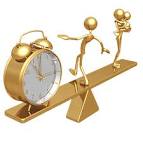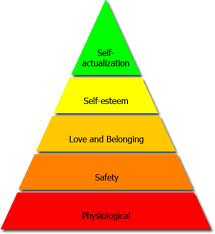HRM

Several decades ago there was a global social pattern where husbands were considered to be the breadwinners, whereas wives stayed at home and were mainly engaged in bringing up their children and doing household chores. However, this pattern has changed dramatically and irreversibly in global level in general and in Europe and USA in particular. As a result, today both, husbands and wives have their own career aspirations and this has caused a range of implications for their families, as well as, organisations employing them. Dual-career couple has been defined as “a married couple where both husband and wife have different careers” (HR Dictionary, 2011, online). “For dual-career couples and working women, balancing work demands with personal and family responsibilities is difficult to do” (Jackson and Mathis, 2007, p.295), and the situations becomes even more challenging where dual career couples have a child or children. Organisations have to introduce specific measures and initiatives in order to assist their dual-career couples and parent employees to achieve work-life balance, and thus to achieve their commitment and contribution to the achievement of organisational objectives in an effective manner. The Issues Associated with Dual-Career Couples and Parent Employees It is a fact nowadays that “the number of dual-career couples is increasing and the trend is worldwide. DuPont, for example, has 3,500 dual-career couples in the workforce of 100,000” (Aswathappa and Dash, 2007, p.160). Werner and DeSimone (2009) explain this dramatic increase in the numbers of dual career couples with increasing role and rights of woman in society and changing family values. From a purely economical viewpoint increasing numbers of dual career couples, as well as, parent employees is considered to be a positive tendency, because this will positively contribute to the level of tax revenues and value creation and ultimately, increasing standard of…
By John Dudovskiy
Category: HRM

There are vast differences between working life in UK and China that relate to many aspects of employment. At the same time there are still some similarities between the workplaces in above two countries as well. The main points relating to the differences can be summarised into the following three points: First, there are different perception of working hours in UK and China. In UK usually the working hours are fixed, and the cases of employees working beyond their working hours are rare, and even in these occasions they get paid for overtime. In China, on the other hand, although there are specific contracted hours for employees, nevertheless, the cases of employees staying beyond their contracted hours without additional payment are commonplace. Second, there are different management styles in UK and China. Specifically, in UK the majority of managers practice democratic and participative management styles, and assign a part of the decision making function to their subordinates, by involving them in decision making process. In an eastern country like China, on the other hand, managers have paternity and authoritative management style, and the occasions where employees are involved in decision making are not common (Wood, 2009). Third, there are differences in motivation between UK and Chinese managers. Financial rewards are considered to be one of the most effective motivational tools in UK workplaces. On the other hand, “while additional money may motivate Chinese employee, they will not generally demand rises directly. As members of collectivist society, the Chinese are more likely to see success or failure as a group effort, leading to group recognition and raises rather than individual rewards” (Silvermore, 2005, p.116). Fourth, there are vast differences in duration of employment between UK and China. In UK it is popular among employees to change companies every several years caused…

The level of effectiveness of people working in the position of Chief Executive Officer (CEO) is important not only for the well-being of employees working for the same company, but to the state of the national economy in general. Therefore, it has to be insured that only people with relevant skills, character, experience and knowledge are employed in such a responsible position. This first part of the report discusses working conditions, rewards and main tasks of CEOs, as well as briefly analyses qualifications, personal characteristics and skills CEOs must posses. Moreover, CEO person specification is also provided in the first part of the report. CEO Working Conditions, Rewards and Main Tasks CEO’s working conditions are perceived to be posh and luxurious with fashionable and highly expensive office furniture, usually grandiose design and latest technological appliances. However, Burke and McDonald (2010) warn not to be mislead with the perception of comfort associated with the role of CEO and mention such elements as increasingly long working hours, and huge amount of stress to be associated with the role. CEO’s usually receive remuneration packages that are highly attractive and include basic pay, usually in six digit figured, bonuses and a wide range of other perks, such as company cars, free insurance, and in some instances even free homes. Moreover, even when CEOs have to leave their position due to some reasons they are offered a considerable sum of payment, known as a golden parachute. According to Canals (2010) CEO’s main tasks can be summarised to the following points: a) Implementing the mission and values of company; b) Leadership development c) Allocating resources in an efficient manner d) Maximising operational efficiency e) Implementing operational design Qualifications for CEO There is no specific formal qualification requirements for individuals aspiring to the corporate executive…

Paauwe (2004) stresses the role of various types of team building activities in order for the each individual member of the team to be motivated. In order to achieve a greater positive impact, Paauwe (2004) stresses, team building activities have to be conducted in an environment outside of office and in informal circumstances. Shermon (2004) expands the above point by stating that company management has to adopt a proactive approach in terms of celebrating memorable dates that relate to everyone such as company anniversaries and a range of national and international holidays, as well as celebrations related to individual members within the workforce such as birthdays, additions to family etc. Moreover, Johns et al (2005) offer interesting viewpoint in terms of motivating employees in the workplace. Specifically authors state that managers have to be effectively motivated themselves in order to be able to motivate their subordinates. However, Johns et al (2005) fail to provide any sound recommendations in terms of self-motivation to be engaged by managers. Johns et al (2005) also maintain that employee motivation activities should be institutionalised within business activities and not to be occasional activities managers engage in. Furthermore, the authors state that there should be an employee motivation program established in organisations that should ensure systematic employee motivation through a range of measures that might include training and development programs, appreciations of the most notable contributions to the success done by individuals and groups through tangible and intangible means etc. Torrington et al (2008) take this advice to the next level by stating that ‘infrastructure of motivation’ should be present within organisations that include devising organisational systems including various policies and procedures in such a way that they contribute to the level of employee motivation. References Torrington, D, Hall, L & Taylor, S, 2008, Human Resource…

Johns et al (2005) divides motivational tools exercised by companies into two categories: tangible and intangible. Tangible motivational tools include money, facilities, benefits, travels and some perks of the job, whereas such elements of employee recognition, appreciation letters, informal talks etc. Byars and Rue (2007) highlight the efficiency of intangible motivational tool, stating that this form of motivation causes a deeper emotional attachment compared to tangible motivational methods if effectively implemented, and at the same time they are cost effective for companies as well. This idea has been supported by a range of other authors as well who list the shortcomings of monetary motivation with statements like “money can motivate individual performance; however, the impact on performance is typically short-lived” (Marciano, 2010, p.33). Another effective employee motivation tool that has been mentioned by Simon (2007) involves the trend of ‘employee ownership’. Namely, nowadays increasing number of companies are offering or awarding stock options of the company to their employees. Simon (2007) stresses that the effectiveness of this strategy is ensured by two facts. Firstly, employees are going to feel appreciated for their contribution to the company through ‘employee ownership’ motivational tool. Secondly, ‘employee ownership’ plan will effectively motivate employees for future efficient performances, because employees will feel the sense of ownership for the business. Currently, this form of motivational tool is especially popular with a number of leading retailers in UK such as Tesco, Marks and Spencer, Sainsbury’s and others. It needs to be said that although many works have been done to address issues associated with motivation in the workplace most aspects of the issue are explored only in the surface within the business context. In other words, motivation issues within the business context are studied only with cause-and effect approach as “we can only observe the outward behaviour…

Employee rewards can be divided into two categories: tangible and intangible. Tangible employee rewards include financial incentives, presents, holidays, various perks etc. According to Woods (2009) intangible rewards include the following points: i) Communication between management and employees. Management should ensure the intensive level of communication with the workforce discussing with them the various aspects of the business. Moreover, engaging employees in decision making processes will positively contribute to the level of their job-satisfaction and will increase their loyalty. ii) Opportunities for career development. Some of the highly qualified professionals value the opportunity for personal and professional growth, and display willingness to join a company where such opportunities exist, even if the payment package is not so competitive. This fact should not be ignored by management, and accordingly opportunities for personal and professional growth should be provided for employees that would be highly beneficial for both, employees, as well as the company. iii) Assisting with employee work/life balance. Management should assist its employees with maintaining their work and life balance by providing opportunities of job sharing, working from home etc so, and in this way the company can dramatically increase its value in view of a potential job applicant. iv) Recognition of employee contribution. Each single occasion of positive employee contribution should be recognised by management by sending appreciation letters, verbal appreciation, and announcement and through other means. v) Providing coaching at work. Some potential applicants hesitate to apply for a vacancy because they would not feel confident if they could do the job. The management should organise coaching for each new employee joining the company, so that people with necessary qualifications would feel confident to apply for a position with the company. Moreover, according to Price (2004), as taken from Naidoo and Wills (2000) promoting health and safety in the workplace companies…
By John Dudovskiy
Category: HRM

Employee training and development. The following purposes of training and development as proposed by Beardwell et al (2004): a) Maximising productivity and service provision for the company b) Developing the adaptability for the workforce c) Developing an organisation as a whole d) Increasing job satisfaction, motivation and morale of workforce e) Improving standards and safety at work f) Promoting the Better utilisation of other resources g) Standardisation of work practices and procedures Wood (2009) divides trainings methods into two categories: traditional training methods, and electronic training methods. Traditional training methods include lectures, on-the-job training, apprenticeship training, offside training, programmed learning, informal learning, job instruction training, and training stimulated by audiovisual tools. As a traditional training method, on-the-job training includes job rotation, coaching, and action learning, whereas the main elements of off-the-job training (offside training) are case-study, games, external seminars, Internet-based seminars and conferences, university-related programs, role-playing, behavioural modelling, Internet educational portals, and behavioural modelling. The main elements of electronic training are computer-based training, video-conferencing, electronic performance support systems, tele-training, learning portals and others. Paauwe (2004) specifies task analysis to be a detailed study of the job to be undertaken in order to identify skills required for the job. Performance analysis, on the other hand, as Shermon (2004) informs, examine individual and collective performances within organisations in order to identify deficiencies, then training and development programs can be devised in order to eliminate these performance deficiencies. Moreover, Behaviour Modelling has also been identified as an important element of training and development programs and Dessler (1984) informs that behaviour modelling includes three following components: a) Showing trainees the right (or “model”) method of performing a task b) Giving opportunities to trainees to perform in this way c) Giving feedback on the trainees’ performance. Strengths of behaviour modelling as an element of training and development scheme is…

Recruitment and selection of new team members need to be undertaken with the primary aim that “the required numbers of employees with required talent are available when needed” (Bratton and Gold, 2001, p.13), in our case the required number of employees are seven team members with special characteristics and talents specified as above. It is important to have a clear understanding about the differences between recruitment and selection. The primary aim of recruitment is searching for and obtaining potential job candidates in sufficient numbers and quality in order for the organization to be able to select the most appropriate people to satisfy its job needs. (Dowling and Schuler, 1990).Selection, on the other hand, involves selecting candidates among recruited pool of candidates in order to hire for the job. (Hackett, 1991) The primary aim of recruitment is considered to be “to obtain at minimum cost the number and quality of employees required to satisfy the human resource needs of the company” (Armstrong, 2001, p.385) In order to employ the members of the team for the roles specified above the following recruitment strategy is going to be followed as proposed by Beardwell et al (2004): Firstly, each individual vacancy within the team, and their roles and responsibilities are going to be specified. Secondly, all available recruitment methods are going to be critically analysed in order to identify the most suitable ones taking into account the specifications and objectives of the team. Thirdly, recruitment advertisements are going to be undertaken in accordance with the chosen specific recruitment method(s). Fourthly, employment documentations are going to be dealt with as regards to each person recruited. Fifthly, recruitment monitoring and evaluation is going to take place taking advantage of previous experiences regarding this matter. Sixthly, recruited candidates are going to be shortlisted in order to proceed…
By John Dudovskiy
Category: HRM

Abraham Maslow’s Hierarchy of Needs. The nature of initial studies on motivation can be summarised in the idea that “early and modern approaches to motivation are based on the premise that increasing the amount of time and effort that an individual devotes to a task (i.e. task motivation) will result in higher levels of individual performance and increased productivity for the organisation” (Landy and Conte, 2010, p.368). Arguably the most prominent author on the topic of motivation is Abraham Maslow. Maslow states (1943, p.372) that employees have five levels of needs: 1. The Physiological needs. This is the basic needs for living, which includes oxygen water, protein, salt, sugar, calcium, and other minerals and vitamins. They are also known as the “Biological necessities”. They also include the needs to be active, to rest, and to sleep. These needs are the strongest because a person needs to have the factors above in order to survive. In business environment it means good payment, and good environment for working. 2. The safety and security needs. When physiological needs are reached, the second need comes into place, which for employees means finding the safe circumstances, stability, and protection. 3. The belonging needs. When the both satisfactions are reached, belonging needs layer would arise. Employees might begin to feel the needs of friendships, affectionate relationships in general, or even a sense of community. 4. The esteem needs. Maslow has divided esteem needs into two parts: lower and higher self-esteem needs. The lower one is the need for respects for others, whereas the higher one requires self-respect, which includes the sense of confidence, achievement, independence, and freedom. 5. Self-actualization needs. This is the level, when employees satisfy all their needs, including the four needs above. In business sense it means the opportunities for developing new skills, scope to meet challenges and room to perform…

Today there is a fierce competition in every industry in the marketplace. Therefore companies are striving to gain competitive edge whenever and wherever it is possible, by increasing productivity, improving service, and ensuring that the company can adapt to ever-changing business conditions. And in almost all cases the ultimate successes of the company in many fronts depend on company employees. HRM plays a crucial role in maintaining the competitive workforce in the company by being involved at the strategy, policy and decision making processes. The HRM team achieves these objectives by recruiting and selecting the right and qualified staff to ensure the goals and objectives of the organization are achieved. Human resource managers form a clear understanding of the talent pool the company possesses or whether they need to recruit from outside. New challenges businesses are facing in the 21st century require new approaches from business leaders. And solutions for these challenges are found by the workforce though increasing their qualifications and knowledge, sharing the knowledge and by developing and implementing new ideas. All of these indicate that the role HRM will be ever increasing in the 21st century. However, company HRM should function on a new level in order to respond to the challenges of the 21st century and to use the new business environment to the benefit of the company, to increase the marketshare. The following recommendations are aimed at making company’s human resources to function in a cost effective and value added manner. 1. The status of HRM should be increased in senior management view. Unless senior management consider HRM function of the company to be an important and integral part of the company overall operations by financing it accordingly and acknowledging its contribution, the true potential of HRM to create competitive advantage for the company would…
By John Dudovskiy
Category: HRM
